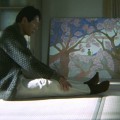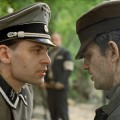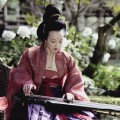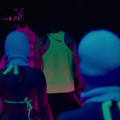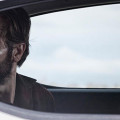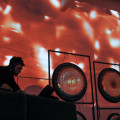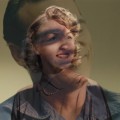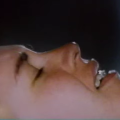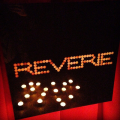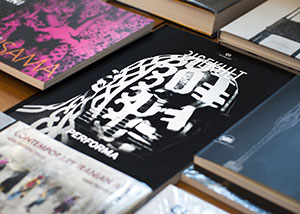The Hateful Eight è l’ottavo film di Quentin Tarantino, probabilmente il terzultimo della sua filmografia, recentemente infatti il regista ha dichiarato che dopo The Hateful Eight ne girerà soltanto altri due per poi ritirarsi. Il film è stato concepito come “pellicola” per l’antico formato 70 mm Ultra Panavision, quello del cinema che ama e che più lo rappresenta. Ogni riferimento a Leone è chiaro, quel tipo di cinema ormai lontano dalla contemporaneità, che solo i cineasti nostalgici possono e vogliono ricordare. Questa volta, infatti, prende le distanze dal digitale con una presa di coscienza sentita. Tarantino ha deciso di tornare alle origini del cinema, proponendo nuovamente il genere che meglio interpreta la sua passione, il western, questa volta con varie contaminazioni. In Django Unchained (2012) il protagonista era uno schiavo di colore mosso dal desiderio di vendetta per liberare la sua amata. In The Hateful Eight non ci sono veri eroi e i protagonisti sono otto, infatti il regista dichiarò: “questo è un film dove le grandi star del cinema non funzionerebbero. Deve essere un insieme in cui nessuno sia più importante di qualcun altro”. Come nei miglior film di Peckinpah insomma, si respira quell’aria “marcia” dove non esiste altra morale se non accaparrarsi la taglia dei ricercarti. Gli odiosi otto, appunto. Il film inizia col suo vero protagonista, lo scenario. Si capta fin da subito il freddo angoscioso e imponente delle terre del Wyoming accompagnato dalla splendida overture del maestro Ennio Morricone con quel senso del cupo e misterioso che affascina. Una carrozza viaggia per raggiungere la città più vicina ma una bufera improvvisa la obbliga a fermarsi in una locanda. Tutti i nostri personaggi si conosceranno in questa desolante location, e saranno costretti a rimanerci per due giorni. Tarantino sembra aver voluto mettere in atto tutto ciò che ama del suo cinema, chi lo conosce bene, sa quanto lui possa amare le sue creature, i suoi figli cinematografici, ebbene, gli odiosi otto non sono altro che tutti i personaggi delle opere tarantiniane in un solo film. Ognuno è mosso dal solo scopo di raggiungere il proprio obiettivo, senza curarsi degli altri, perché l’uomo è di natura avida e Tarantino lo sa bene. I movimenti di macchina che seguono costantemente le singole azioni, come ripararsi dal freddo con una coperta, l’inchiodare la porta rotta con un’asta di legno o il bere una tazza di caffè e mangiare stufato, tutto viene seguito con dedizione, poiché ogni singola azione sedimenta un mistero. Gran parte del film è ambientato in questa locanda, dove tramite una serie di eventi si giungerà ad un violento epilogo. The Hateful Eight è in quanto regia forse l’opera più matura di Tarantino. Essa pare assumere un’identità propria, basti considerare il gioco dei cambi di fuoco nella sequenza della canzone accompagnata alla chitarra, tensione narrativa di rara efficacia, una suggestione tale che probabilmente scrive già la storia del cinema contemporaneo. La messa in scena è scandita da una serie interminabile di dialoghi e giochi di sguardi, con rallenty nelle “scene madre” quasi a voler omaggiare quel cinema “sporco” del panorama western degli anni ’70. Ciò rende tutto veramente unico, con un montaggio alternato da movimenti di macchina lenti e poderosi che raffreddano ancor di più la messa in scena, rimandando il cinema di Tarantino verso nuovi orizzonti. Il film è stato nominato agli Oscar 2016 per la fotografia di Robert Richardson, migliore attrice non protagonista Jennifer Jason Leigh e per la sublime colonna sonora di Ennio Morricone ( già oscar alla carriera nel 2007).
The Hateful Eight is the eighth film by Quentin Tarantino, probably the third last of his filmography, in fact, recently the director said that after The Hateful Eight it will turn only two more films and then retired. The film was conceived as a “film” to the old format 70mm Ultra Panavision, the cinema he loves most . Any reference to Leone is clear, that kind of film now far from contemporary, that only the nostalgic filmmakers can and want to remember. This time, in fact, distanced itself from the digital with a pinch of felt consciousness. Tarantino decided to go back to the origins of cinema, re-proposing the genre that best represents his passion, the western, this time with various contaminations. In Django Unchained (2012) the protagonist was a black slave moved by revenge to free his beloved. In The Hateful Eight there are no real heroes and protagonists are eight, in fact, the director said: “This is a film where the big movie star would not work. It has to be a set in which no one is more important than someone else.” As in best Peckinpah film short, you breathe that air “rotten” where no other moral if not having the reward of the wanted. The hateful eight, in fact. The film begins with his true protagonist, the scenery. It picks up immediately the cold anguished and imposing lands of Wyoming accompanied by the beautiful overture by Ennio Morricone with that sense of dark and mysterious that fascinates us. A carriage travels to reach the nearest town, but a sudden storm forces her to stop at an inn. All our characters will be known in this desolate location, and will be forced to stay there for two days. Tarantino seems to have wanted to implement all that love his cinema, those who know him well, he knows how much he can love his creatures, his film children , well, the eight are not hateful but all the characters of tarantiniane works in one film. Everyone is moved by the sole purpose of achieving its objective, regardless of others, because man is greedy by nature and Tarantino knows it. The camera movements that constantly follow individual stocks, as sheltering from the cold with a blanket, as nailing the broken door with a wooden pole or drinking a cup of coffee and eating stew, everything is followed with dedication, as each single action settles a mystery. Much of the film takes place in this inn, where through a series of events will come to a violent end. The Hateful Eight is directed as perhaps the most mature work of Tarantino. It seems to take on its own identity, just considering the play of the fire changes in the sequence of the song accompanied on guitar, narrative tension of rare effectiveness, a suggestion that probably has already written the history of contemporary cinema. The staging is punctuated by an endless series of dialogues and glances, with slow motion in “mother scenes” as if to pay homage to the cinema “dirty” of the western landscape of the ’70s. This makes it truly unique, with an alternate mounting movements slow and ponderous machine that cools even more the staging, sending back the Tarantino film to new horizons. The film nominated for an Oscar in 2016 for the best photography Robert Richardson, best supporting actress Jennifer Jason Leigh and the sublime soundtrack by Ennio Morricone (formerly Oscar for Lifetime Achievement in 2007).




















